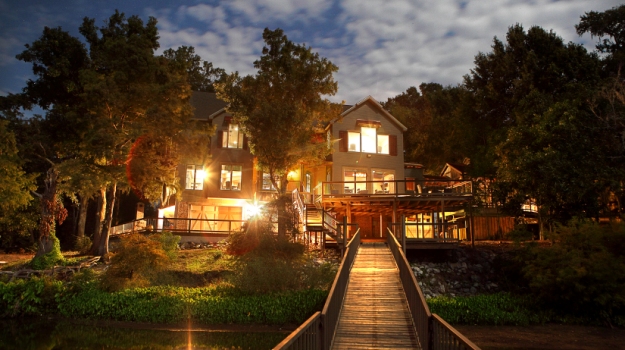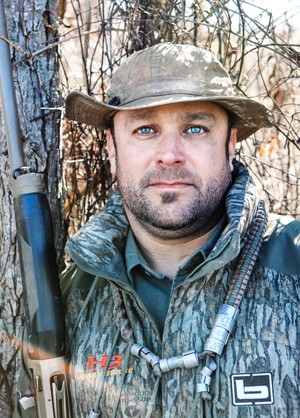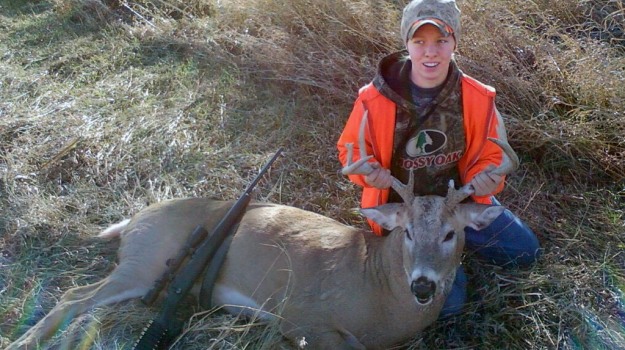What Is Honey Brake?

Editor’s Note: Sometimes when I’m waterfowling, I really don’t want to shoot. I’d rather just watch. One of those times was the first time I went waterfowling at Honey Brake Lodge in central Louisiana. I saw 100 or more ducks lighting in the decoys, and I was so excited that I wanted to observe that spectacle as long as I could before the ducks started dropping, and the other ducks raced to get away from the lead that was chasing them. Drew Keeth, the CEO of Honey Brake Lodge, is a master duck caller and a great hunting partner. “Aren’t you going to shoot, John?” Keeth asked me with a concerned look on his face when I hunted Honey Brake. I told him, “Not yet. I just want to take in this sight and lock it in my memory forever.” This week we’re talking to Mossy Oak Pro Drew Keeth.
Honey Brake is a 20,000-acre property I manage here in central Louisiana. We have about 7,000 acres of row crops and about 9,000 acres of Wetlands Reserve Program (WRP) land. Honey Brake is the largest WRP owned by a single landowner in the United States. The property in the WRP was croplands that had been cleared many years ago. So, we restored that land back to a woodland bottomland/hardwood area. In 2004, 550,000 trees were planted on Honey Brake’s WRP land.
 Honey Brake has 4,000 acres of shallow-water areas on 8,800 acres. Then of those 4,000 acres, we manipulate the native vegetation on about 3,300 acres, which has created a duck haven that holds ducks all year long. When we drain the water off the farmlands, the ducks move down to the WRP land, and they’ll hold there until about June when they fly down to Mexico. Then we get another giant push of ducks when they fly back from Mexico. We will have some ducks, like mottled ducks, that are suited to breeding in southern marshes, that will summer here.
Honey Brake has 4,000 acres of shallow-water areas on 8,800 acres. Then of those 4,000 acres, we manipulate the native vegetation on about 3,300 acres, which has created a duck haven that holds ducks all year long. When we drain the water off the farmlands, the ducks move down to the WRP land, and they’ll hold there until about June when they fly down to Mexico. Then we get another giant push of ducks when they fly back from Mexico. We will have some ducks, like mottled ducks, that are suited to breeding in southern marshes, that will summer here.
By the time, we pull the water off the WRP to fill up the rice fields, we’re able to provide habitat for food for ducks all year. In February and March, Honey Brake’s land will be holding between 450,000 and 800,000 ducks. After the ducks go to Mexico, we’ll only have a few hundred ducks that hold over here during the summer months. Then just before duck season arrives, we’ll have about 200,000 ducks for the first split in duck season and about 450,000 ducks throughout the season. Honey Brake has a 13,500-square-foot lodge and three, 1,800-square-feet duplexes. So, we can take up to 16 hunters in the lodge during waterfowl season.
We have about 55 blinds where we brush and put out decoys. However, all total we have about 90 blinds that we can move to and put out decoys. We attempt to manage the food, the water and the hunting pressure for the ducks. We try to keep the hunting pressure low, and the availability of water and food for ducks high. We have duck blinds and duck holes. The duck holes can be hunted every day, and that hunting pressure won’t affect the ducks. Those duck holes are historic places where ducks have always come to, but this past year, our region had a drought. One of our best duck holes dried-up. We pumped three transport loads of water into that duck hole, because it was our best duck hole at Honey Brake. Then we got a rain on the Friday before the opening of duck season. I drove by that duck hole and went to the next blind up from it, and the ducks were flying past our blind and landing in that duck hole that had been dry as a bone the previous week, because the ducks had been coming to that same spot for years. We have blinds set-up, so that regardless of which way the wind is blowing, we can have ducks flying into the wind.






























